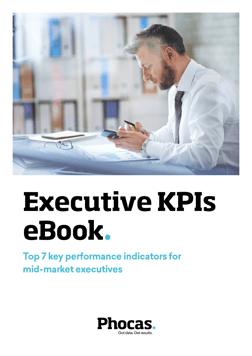Bigger doesn’t mean better: what big data is missing

This is why your organization needs small data.
You know how the story goes: it starts with one data point. Then another. And another.
And then, in these futuristic sci-fi movies, humans are surrounded by data, create advanced technology, Artificial Intelligence becomes independent, and — boom — robots are running the world.
While we aren’t there yet, it seems like we’re well on our way. Features such as Natural Language Processing are coming to light, augmented reality has started becoming available to consumers, and information is exploding to the point where “big data” is one of the primary terms you hear as it applies to business intelligence (BI).
When it comes to data, bigger doesn’t necessarily mean it’s better. In fact, small data — information in a volume and format that makes it accessible, informative, and actionable — is where the real decisions happen. It’s what organizations use to understand customers, make critical business decisions, and set strategy. That is because big data is missing one key piece: the human element. This applies to both ends of the business spectrum, from the leaders making the decisions to the stakeholders impacted by that decision.
So how can you enable your teams to make consumer-centric decisions with small data? Read on to find out.
1. Leaders making the decisions
In an era where data discovery is crucial to gaining insights, the information in front of your teams needs to be consumable. They should to be able to process it, analyze it, and act accordingly. In other words, they need small data. Whether it’s a chart, graph, report, or a customer’s data from their Fitbit, it’s what high-performing decision makers are looking at to collaborate with teams and key stakeholders to develop strategies.
People are the users behind the data. We’re the ones examining the dashboards and visualizations to make business decisions. Make sure your teams have the right solution they need to examine their data closely in a user-friendly format.
2. The stakeholders impacted by the decision making.
At the other end of the spectrum, there are the consumers of your product. It’s important to get to know your customer and design products and services that fit their needs. Small data can help you with this customization.
Take Lego, for instance. By visiting one of their customers, an 11-year-old boy, at his home they were able to grasp the newest generation’s need for instant gratification and being in control. By observing this customer and drawing these conclusions, they brought their smaller building blocks back into production and also released The Lego Movie.
Get to know your customer and the way they view their world. Conduct case studies or interviews. Moreover, look at your business data to identify key trends in your sales. Which products are becoming more popular while others are declining? Or combine the two: identify what a customer has stopped buying from you, and visit them to discuss why. Find out what their pain points and successes are, and how your product can be reimagined to meet their needs.
While movies depicting our future with data can be exciting, we may not reach a point where machines take over the world entirely. The users behind the data — the small data — are too important. We need them to add the human element when performing analytics, but also acting as the source of inspiration for our businesses. It is only through combination of the two, humans and small data, that we achieve success.
What’s next?
We’ve talked about the importance of small data and the human element. Would you like to learn more about achieving the optimal balance between data and the human decision maker? Download our eBook, "The top 7 KPIs a CEO should know and measure" by clicking here or on the button below.

Platform CO2 emissions down 68% in first year as a B Corp
Phocas leads the charge towards a more equitable and sustainable future during its first year as a B Corp, setting the bar high for tech companies globally.
Read more
Finance Business Partnering: An ultimate guide
Let’s face it: most teams work in silos.
Read more
Actionable data is business intelligence
Every day, the business world creates more than 2.5 quintillion bytes of data. Last year, 1.7MB of data was created every second for every person. While the volume of data is impressive – and growing – collecting big data for data sakes is really not that useful. Most of the data we generate today is unstructured, which means it comes in different forms, sizes, and even shapes. This means you need to order it so you can manage and analyze the data which is often difficult for companies. However, getting this work right means you'll have actionable data.
Read more
How to get a quick ROI from business intelligence software
When implementing any new strategy, hiring new people or investing in business software, you want to make sure that your business is getting a return on its investment.
Read more
Find out how our platform gives you the visibility you need to get more done.
Get your demo today